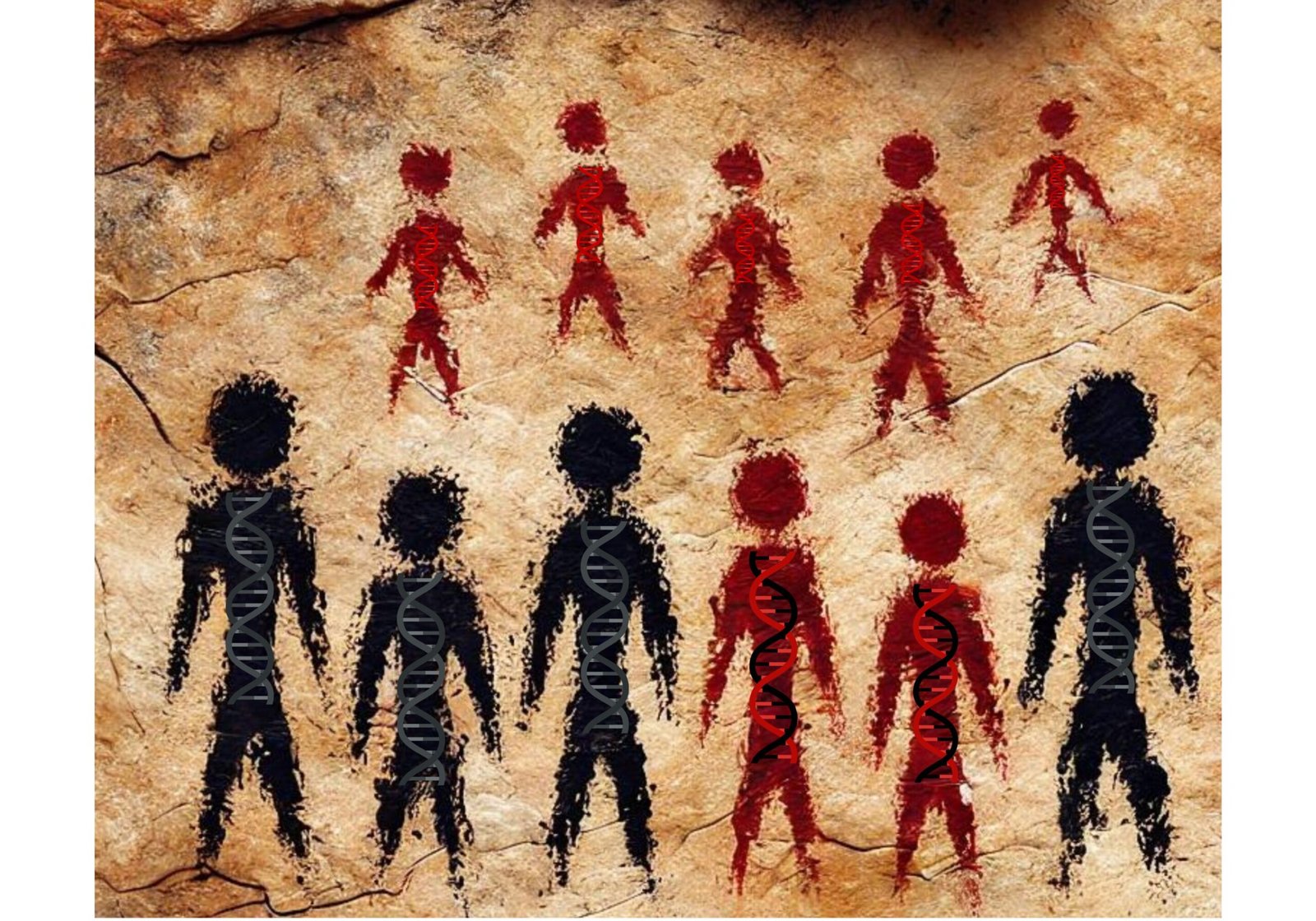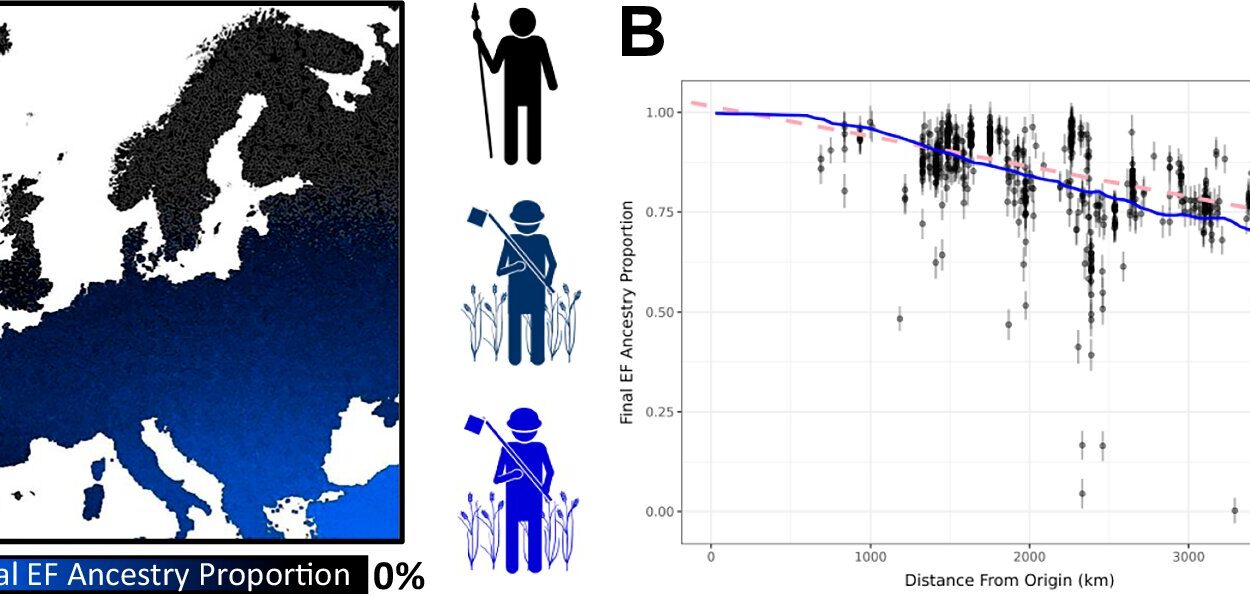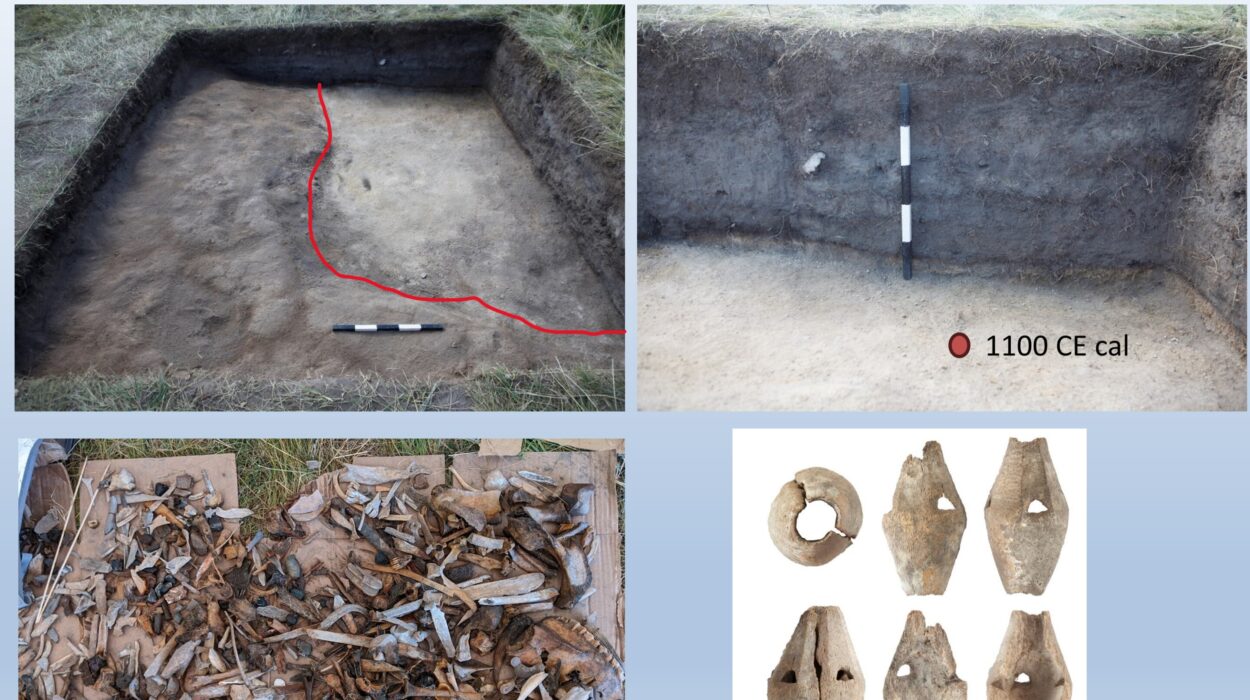A new and more precise analysis of DNA from ancient modern humans in Europe and Asia has provided groundbreaking insights into the timing and extent of Neanderthal interbreeding with Homo sapiens. For decades, scientists have been investigating when and how Neanderthals and early humans interacted. This research, which builds on several previous studies, now indicates that the process of interbreeding began around 50,500 years ago and continued for about 7,000 years. This significant finding offers new clarity into the period during which these two human species coexisted in Eurasia and how their genetic legacy continues to shape modern human populations.
The interbreeding between Neanderthals and modern humans is a crucial part of the story of human evolution. Researchers estimate that between 1% and 2% of the genomes of present-day non-African humans are derived from Neanderthal ancestry. While this might seem like a small proportion, it holds significant value in understanding how modern human populations evolved and adapted over time. These ancient interactions occurred at a time when Neanderthals were gradually disappearing from Europe and Asia, though their genes continued to flow into the human gene pool for thousands of years after.
This more detailed estimate was achieved by analyzing ancient genomes from DNA retrieved from human bones across Eurasia, supplemented by present-day human genomes. The study team, led by researchers Priya Moorjani from the University of California, Berkeley, and Benjamin Peter from the University of Rochester, used cutting-edge genomic analysis techniques to achieve these insights. By analyzing 58 ancient human genomes from Europe, Western, and Central Asia and comparing them with data from 275 present-day humans, the researchers narrowed down the timing of interbreeding with remarkable precision. The new estimate places the most significant period of Neanderthal gene flow around 47,000 years ago, a date that lies comfortably between previous estimates that suggested interbreeding took place between 54,000 and 41,000 years ago.
The new data also contributes to a broader understanding of the migration of Homo sapiens out of Africa. The results suggest that by 43,500 years ago, modern humans had already completed the initial phase of their migration from Africa into Eurasia. This insight is particularly important because the Neanderthal genes inherited by modern humans appear to be concentrated in individuals whose ancestors migrated out of Africa to settle in Eurasia. The timing of this migration and interbreeding is crucial for understanding not only the fate of the Neanderthals but also the evolutionary history of modern humans.
One of the findings of this study has to do with the extent to which Neanderthal ancestry varies between different populations. East Asians, for instance, carry around 20% more Neanderthal-derived genes in their genomes than Europeans and West Asians. This difference highlights the complexity of gene flow, suggesting that Neanderthal-human interbreeding was not a uniform process. According to the team, the different groups within the Homo sapiens population may have had varying timelines of interbreeding with Neanderthals. While some populations stopped interbreeding sooner, others may have continued mixing for longer periods, even extending past the 7,000 years identified by the study.
To arrive at these insights, the team applied advanced statistical methods that allowed them to create more accurate models of ancient DNA. In earlier studies, researchers could estimate when gene flow occurred using individual samples from either living humans or single ancient individuals. However, by combining these ancient genomes with the genomes of contemporary humans from around the world, the scientists could see a clearer picture of the timeline for Neanderthal admixture.
One important aspect of this analysis was the discovery of “Neanderthal deserts” within the human genome. These are regions where modern humans do not have Neanderthal-derived genes at all. The study found that these genetic deserts developed relatively quickly after the interbreeding between Homo sapiens and Neanderthals. This suggests that certain Neanderthal genes were potentially harmful or incompatible with modern human biology. These incompatibilities likely led to the quick removal of certain genetic sequences from the human gene pool. The absence of these Neanderthal genes in early Homo sapiens genomes from around 40,000 years ago provides strong evidence that these regions rapidly disappeared from the gene pool following interbreeding.
Neanderthal gene flow was not evenly distributed across the human genome. In fact, the team found that certain Neanderthal genes remained more common in human populations over time. Genes that had beneficial effects, such as those associated with immune system function, skin pigmentation, and metabolism, were inherited and passed on more frequently than genes that had detrimental effects. For instance, certain genes inherited from Neanderthals have been linked to immune system functions that likely helped modern humans cope with harsh environments and diseases outside of Africa. One of the most notable of these genetic contributions is a variant in the human genome, inherited from Neanderthals, that offers protection against certain viruses, including the coronavirus that causes COVID-19.
While some of these beneficial genes helped humans survive in new environments, others became useful in the long run, depending on how the environment and health challenges changed over time. The ability to adapt to pathogens, temperature extremes, and food shortages was likely aided by the incorporation of these advantageous Neanderthal genes. The longer-term success of these genetic traits likely explains why they became more prominent in human populations, despite the disappearance of other Neanderthal-derived genes.
Another significant aspect of this research is the potential that Neanderthal DNA holds in understanding modern health. The analysis not only deepens our understanding of human evolution but also provides insights that could have medical implications today. Genetic variants from Neanderthals linked to human immune responses, disease resistance, and even skin pigmentation patterns could have ongoing relevance to contemporary human health. Investigating Neanderthal ancestry in living humans may give scientists valuable clues about how genetic traits influenced our resilience to diseases over time.
The 7,000 years of interaction between Neanderthals and early Homo sapiens forms an essential part of the broader narrative of human evolution. The two species lived side by side during a period of cultural development and climatic challenges, marked by shifts in weather patterns, the extinction of megafauna, and the diversification of tools and societal structures. Archaeologists and geneticists are continuing to study the contributions of Neanderthal genes to modern humans through fossil records, ancient genomes, and the biological inheritance patterns seen in living populations.
This ongoing research will no doubt shed more light on the ultimate fate of the Neanderthals and help clarify how they influenced the genetic makeup of modern human populations. For centuries, Neanderthals were thought to be an evolutionary dead-end, replaced by more advanced Homo sapiens. However, as more genetic evidence continues to surface, it’s clear that Neanderthals left a more enduring legacy in our genetic code than previously realized. Through scientific advances, the complex relationships between Homo sapiens and our ancient relatives continue to unfold, providing us with a richer understanding of what it means to be human.
The findings of this analysis also emphasize the broader implications of gene flow in the context of human evolution. Modern humans are not just products of a single migratory wave but instead embody a long and intricate history of interbreeding, adaptation, and genetic exchange. As researchers uncover more about our Neanderthal and Denisovan heritage, the picture of our evolutionary past becomes more nuanced and multifaceted, challenging traditional concepts of human uniqueness. Understanding these ancient connections helps illuminate not only our deep ancestry but also the ways in which our genetic inheritance continues to affect us today.
References: Leonardo N. M. Iasi et al, Neandertal ancestry through time: Insights from genomes of ancient and present-day humans, Science (2024). DOI: 10.1126/science.adq3010. www.science.org/doi/10.1126/science.adq3010
Arev Sümer, Earliest modern human genomes constrain timing of Neanderthal admixture, Nature (2024). DOI: 10.1038/s41586-024-08420-x. www.nature.com/articles/s41586-024-08420-x






